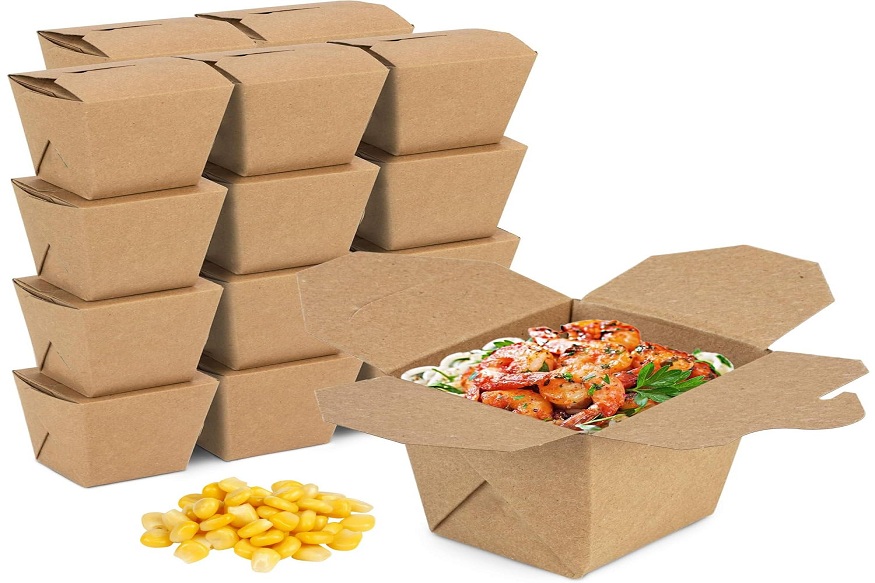The unsung hero of consumer happiness in today’s cutthroat food sector is frequently the basic food packaging box. These packaging options do much more than just hold your culinary masterpieces; they act as silent brand ambassadors, leaving an impact well before the first bite. A critical touchpoint that astute food firms cannot afford to ignore is the connection between packaging and customer experience.
The Importance of First Impressions in the Psychology of Food Packaging
The food packing box establishes a visual and tactile connection as soon as clients receive their meals. Just seconds after looking at a product’s packaging, customers start forming their impressions of the item, studies have shown. If a container is well planned, it feels more caring, higher quality, and pays attention to the small things. The overall feel, weight, and texture of your box can give customers a lot of information about the product’s quality.
Psychology is used in effective packaging to appeal to multiple senses. The visual attractiveness of well organized contents, the sound of opening a secure container, and even the faint aroma that may release when the container is opened all helpto build excitement and enhance the entire eating experience. Customers will remember your products if you use food packing containers that take these sensory factors into account.
Functionality: Where Customer Satisfaction and Practicality Collide
Customer happiness is strongly impacted by your food packing box’s functionality, not just its appearance. Think about how your packaging functions from preparation to consumption. Does it sustain ideal food temperature? Does it stop contamination or leaks? Does it make warming and storing convenient? These pragmatic considerations show that you value the requirements and expectations of your clients.
Ingenious innovations that address common problems can elevate a routine dinner into a remarkable occasion. Steam-release valves that preserve food texture, compartmentalized containers that keep ingredients apart until consumption, or easy-fold designs that convert into serving plates—these considerate features demonstrate to clients that you are aware of their eating preferences and way of life.
Environmental Awareness: The Value Proposition of Sustainability
Customers today are more concerned with the environmental impact of their purchases. Choosing eco-friendly meals boxes helps display the sustainability values your employer believes in. Less harmful packaging also draws customers who care about the environment and like companies that have similar values.
Less packaging, more recyclable content and biodegradable choices reflect how you care about sustainability. Some eco-friendly materials cost more, but lots of people are willing to bear the extra expense for goods that match what they believe in. Deeper client loyalty that goes beyond simple transactional interactions is produced by this alignment of ideals.
Packaging as a Tool for Brand Storytelling
Every food packing box is an opportunity to tell your brand’s narrative. Packaging components, including color schemes, typography, photography, and messaging, combine to convey your distinct market position. Essential questions are addressed by effective packaging: What’s unique about your food? What is the source of your ingredients? What principles underpin your company?
Innovative packaging ideas can include QR codes that connect to nutritional data, preparation methods, or origin stories. In order to establish a personal connection with customers, some food packing containers feature statements from founders or chefs. A straightforward container is transformed into an effective communication tool that increases brand affinity by these narrative components.
Cost Factors: Juxtaposing Quality and Value
Businesses must strike a balance between cost-effectiveness and quality, even while premium packaging materials may increase perceived value. All packaging elements must adhere to the paper cups price principle; striking a balance between consumer demands and long-term financial viability is still essential. Thankfully, developments in packaging technology keep bringing in reasonably priced choices without compromising on beauty or quality.
Stronger brand distinction, less food waste, and more consumer happiness are all benefits of investing in smart packaging. Businesses may defend proper investment that eventually improves client connections and fosters loyalty by viewing packaging as a strategic asset rather than just a cost center.
Temperature Control: Maintaining Food Quality
Temperature regulation is one of the most direct effects on food quality. During the delivery process, superior food packaging containers maintain ideal temperatures, guaranteeing that cold items stay correctly chilled and hot dishes arrive hot. In addition to maintaining flavor and texture, this temperature integrity also maintains food safety, which is a basic consumer expectation.
Food is kept at the proper serving temperatures with the aid of new material developments, ventilation systems, and insulation techniques. Customers get more confident in your quality standards and are more likely to refer you to others when they routinely receive food that is at the proper temperature.
The Unpacking Experience: Making Treasured Memories
Opening a food packaging box is a ritual that symbolizes a time of discovery and expectation. Innovative food companies plan this “unboxing experience” to surprise clients and provide moments that may be shared. Food is gradually revealed in thoughtful packaging, creating anticipation with deliberate design cues that direct the consumer’s journey.
Personalized messages, surprising freebies, or inventive presentation ideas are examples of special touches that turn ordinary meal delivery into unforgettable occasions. When customers post about their amazing unwrapping experiences on social media, these events frequently result in great user-generated content.
Conclusion:
More than just a practical requirement, your food packaging box is an essential part of the entire consumer experience. Every element of your packaging conveys your brand values, attention to detail, and comprehension of customer needs, from initial impressions to eventual disposal.
Businesses may turn routine transactions into remarkable experiences that foster loyalty and spur expansion by carefully analyzing how food packaging containers affect the entire customer journey. The most prosperous restaurants understand that their packaging actively influences how consumers view, interact with, and recall their offers rather than just containing their goods.
When so much competition exists, you could make the most of your simple food packaging box—an opportunity you are probably missing out on. When you give attention to your packaging’s design, function, environmental impact, and user experience, it can turn into a strong bond-builder with customers.

